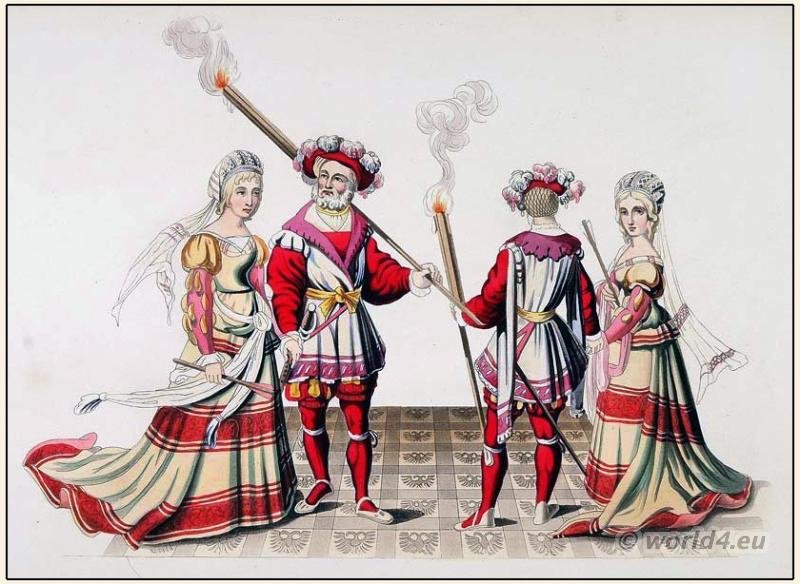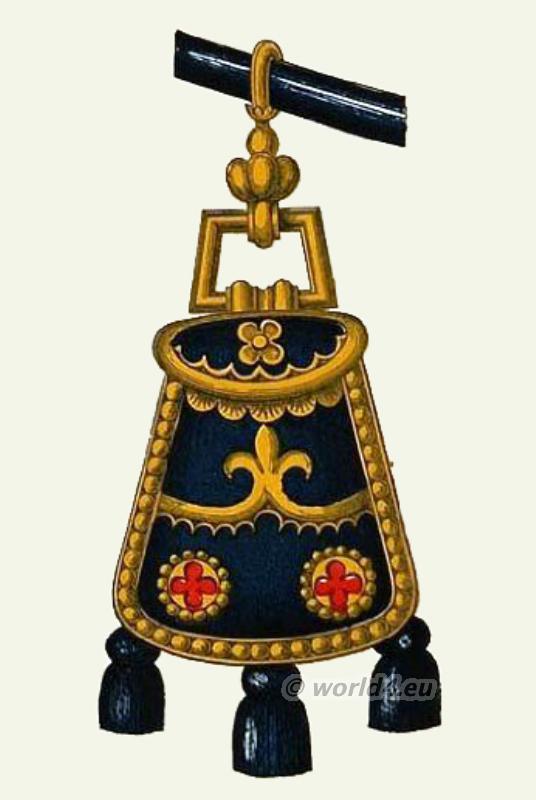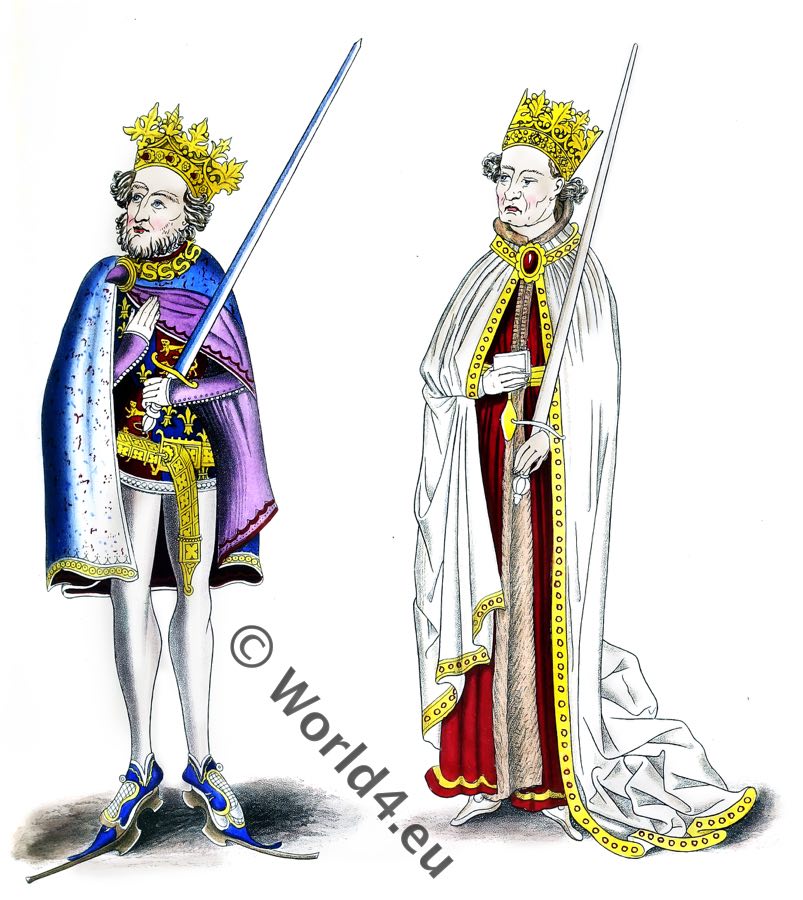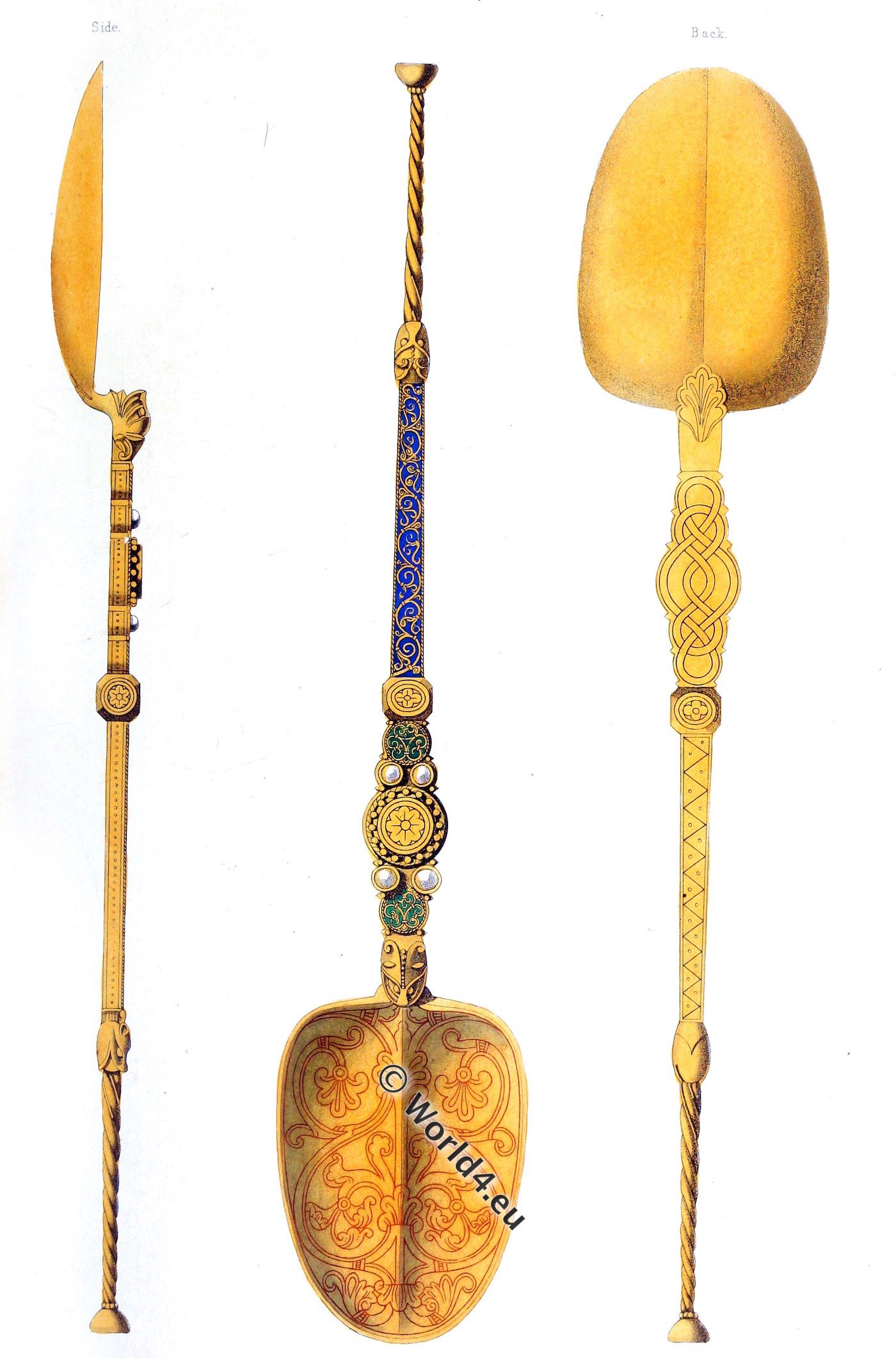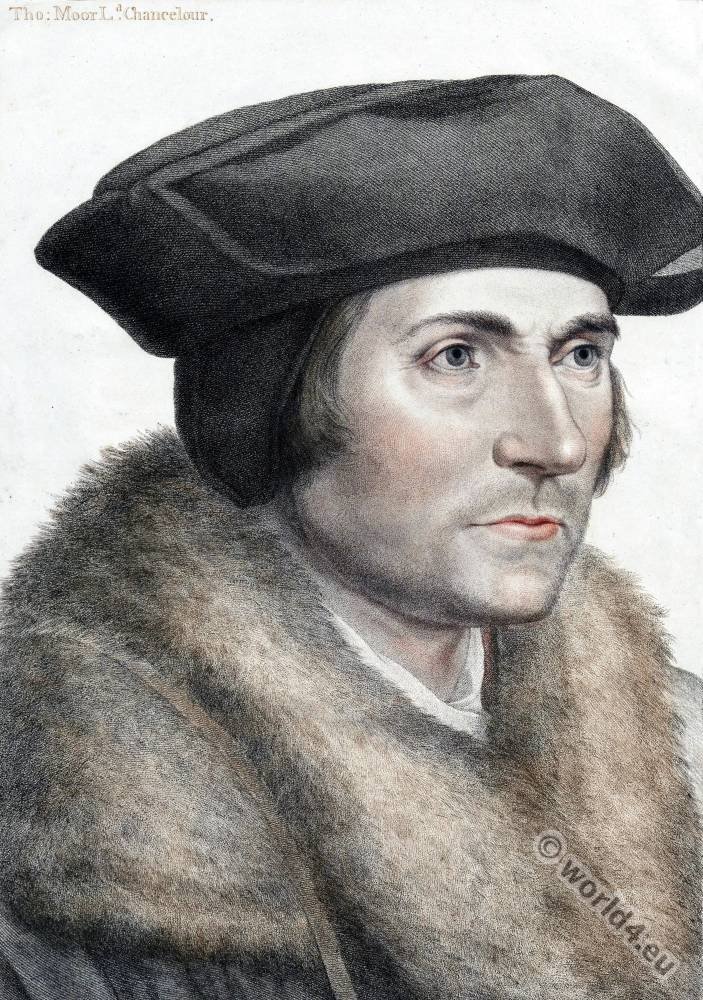FIGURES FROM THE TAPESTRY OF ST. GERMAIN L’AUXERROIS.
LESS tasteful in every respect than the dresses of previous centuries, the costume of the sixteenth century was remarkably stiff and ungraceful, yet exceedingly rich and expensive. Even the gowns of the wives of merchants are described as being “stuck full with silver pins;” and the inventories of the wardrobes of princes and nobles exceed all our previous ideas of splenoid dresses.
The costume of the reign of Henry VIII. derived many of its characteristics from the Germans and from the Flemings. The figures on our engravings appeal to represent the German costume of the beginning of the sixteenth century, and are taken from a tapestry of that period belonging to a dealer in Paris, and at present suspended in the Saint-Germain-l’Auxerrois in that capital.
We believe that the subject of the tapestry consists of allegorical representations of the seasons. The figures bear a strong resemblance to the English dresses of the reigns of Henry VIII. and Edward VI.; but they differ entirely from those of the reign of Henry VII., as represented in the illuminations of the Romance of the Rose. The opening of the century, in fact, formed a strongly-marked point of division between the old times and the new.
One of the innovations was the close fitting hose, which the rich wore of silk, with the upper portion of the covering of the legs slashed, puffed, and embroidered distinctly from the lower part. The men’s shoes were broad at the toes, and frequently slashed, and their appearance was thus far from elegant. The lower part of the hose was open, separate from the upper, and attached to it by buttons or strings, and the final separation gave origin to the later distinct articles of apparel, stockings and knee-breeches, the upper part of the hose having been confounded with the doublet.
The ladies as well as the men wore jackets, as is the case in our picture. The sleeves were also very richly adorned, and were in general separate articles of clothing, attached to the shoulders of the vest, in both sexes. A cap similar to that in our picture was worn by bluff King Hal. The wardrobe of a gentleman was in general particularly rich in “pairs of sleeves.”
In the earlier ages the subjects represented on tapestries were generally taken from the numerous romances then in vogue, or from history, or (very frequently, particularly in the palaces of the ecclesiastics) from Scripture. A number of such subjects of different kinds, formerly existing on tapestries in England, are enumerated in Warton’s History of English Poetry (last edit., vol. i., P: 203). Some such designs will be seen in the large work on. Tapestries, by M. Achille Jubinal. In the fifteenth century had arisen a great taste for allegorical poems and representations, which now made their appearance on the tapestries.
In a manuscript copy of some of Lydgate’s poems, in the Library of Trinity College, Cambridge, one of the poems has the title, “Loo, sirs, the devise of a peynted or desteyned clothe for an halle, a parlour, or a chaumbre, devised by Johan Lidegate, at the request of a worthy citesyn of London.” The poem consists of speeches to be put in the mouths of the principal figures, which were two allegorical beasts named Bycorne and Chichevache, the former of which eat good men and the latter good women, and the point of the legend consisted in making Bycorne very fat and Chichevache equally lean.
The figures in our plate appear to represent maskers; they generally carried torches. Hall the Chronicler, describing the festivities at the court at Greenwich in 1512, says, “After the banket doone, these maskers came in, with six gentlemen disguised in silke, bearing staffe-torches, and desired the ladies to danse; some were content, and some refused; and after they bad dansed and communed togither, as the fashion of the maske is, they tooke their leave and departed.” This is almost a literal description of the picture before us.
The initial letter on the foregoing page is taken from an edition of the French Life of Bertrand du Guesclin (the celebrated hero of the French wars of the fourteenth century, and the opponent of the Black Prince), printed at the beginning of the sixteenth century. It is also found in the first edition of the Mer des Hystoires. It is remarkably fanciful and elegant.
The other cut represents a sack or bag of the same period, from a very splendid tapestry preserved in the Treasury of the Cathedral of Sens.
Source: Cyclopaedia of Costume by James Robinson Planche (Chatto and Windus, 1876).
Discover more from World4 Costume Culture History
Subscribe to get the latest posts sent to your email.

